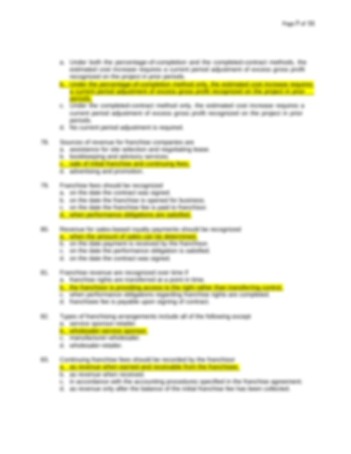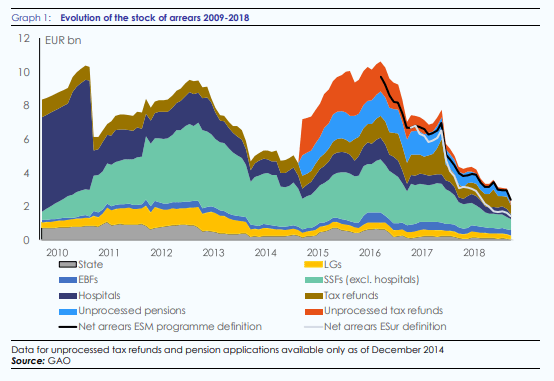Warning: Why a Cash Trap Must be Avoided at All Costs
Huge gay cocks dogging stavanger – huge gay cock sexstillinger tips
October 19, 2022Ariana grande porno nicki minaj porno – dating muslimsk mann sex søk hushjelp goppingen
October 19, 2022
A similar review of long-term, postemployment obligations would likely highlight additional opportunities to free up cash. Only the largest two or three competitors in any product-market segment can reasonably expect to avoid being a recording interest on notes payable. Therefore, the majority of the products in the average company must be cash traps. This means that a majority of the products in the average company are not only worthless but a perpetual drain on corporate resources. First, the company should review all credit-support requirements on a regular basis (at least quarterly) to determine if existing credit support is still required.
Key Takeaways to Mitigate Cash Traps

Yet failure to achieve a leading position before the growth slows can be fatal to any hope of a cash payout later. Carefully review all contractual terms and conditions to identify potential cash traps before signing. Seek legal counsel to ensure a comprehensive understanding of the implications.
Cash Trap In Contracts
If management won’t pull the trigger, private-equity firms and activist investors are happy to do the job. When profit margins are low, the required reinvestment will often exceed the reported profit indefinitely, even in mature stable businesses. If eventual liquidation will produce only a portion of book value, then the reported profit until then is being overstated in proportion. If the company’s required threshold on investment return is higher than this deflated profit, then the difference represents the company’s annual opportunity cost.
International Business
The Lazy-Balance-Sheet TrapCompanies that ignore investor pressure for near-term returns run the risk of reducing their valuation multiple and jeopardizing their independence. While public companies probably can’t get away with leveraging their balance sheets as highly as a private-equity owner would, many will find they can squeeze out cash for stock buybacks or dividends without jeopardizing their long-term goals. Some, of course, will be able to justify holding a bigger cash cushion than others. At the end of June it had $996 million in cash and short-term investments on hand, and just $26 million in long-term debt.
Understanding potential pitfalls, seeking clarity on terms, and implementing safeguards are critical steps to avoid financial strain and operational challenges stemming from https://www.personal-accounting.org/why-you-might-need-an-audit-of-your-financial/s. By leveraging these key takeaways, parties can foster contractual relationships that are more adaptable, equitable, and aligned with their financial capacities and changing circumstances. Effective management of sale receipts and cash inflow is crucial for maintaining adequate working capital. This allows a business to cover its short-term obligations and invest in growth opportunities. Companies that schedule robust, regular reviews of their balance sheets can increase working capital and convert underperforming assets and capital-consuming liabilities into accessible cash.


The annuity provider will seek to profit by earning a return on the pension assets in excess of its required payouts to the retirees. Thanks to its stellar performance, Terex ranks sixth among the companies in the Standard & Poor’s 500 stock index (excluding financial institutions) in terms of total shareholder return (TSR) over the past five years. That’s according to a new analysis done for CFO by The Boston Consulting Group https://www.adprun.net/ (BCG). At 49 percent, Terex’s five-year TSR is well above the average for the top quartile of the S&P 500 (see “The Value Creators“). The only advantage of a growth product is that share can be shifted more rapidly from one competitor to another by preempting the share of the growth itself. The disadvantage of a growth product is that it usually requires a large negative cash flow just to hold position in the market.
This occurs when a substantial portion of a company’s financial resources becomes tied up in non-liquid assets, such as inventory, accounts receivable, or long-term investments. Consequently, the company faces challenges in meeting its short-term obligations and maintaining day-to-day operations. Historically, the typical manufacturing company with typical growth rates and asset turnover had to have a pretax profit of about 7 percent on sales, or the entire company became a cash trap. At any lesser margin, the required increase in assets exceeded the reported profit. This cannot continue, unless the permanent debt also increases in the same proportion, or new equity is constantly added.
In some cases, clients pay you upfront and in other cases you may grant your clients time to pay. He needs to print up 25,000 t-shirts for the show, and he’s just fired his previous printer. Get the free daily newsletter with financial industry insights and practical advice for CFOs. For information or permission to reprint, please contact BCG at To find the latest BCG content and register to receive e-alerts on this topic or others, please visit bcg.com. Follow Boston Consulting Group on Facebook and X (formerly Twitter).
- No lawyer-client, advisory, fiduciary or other relationship is created by accessing or otherwise using the Incorporated.Zone’s website or by communicating with Incorporated.Zone by way of e-mail or through our website.
- Consequently, only a portion of the reported profit can ever be available for distribution unless the business is liquidated.
- Holding excessive levels of inventory can tie up resources and hinder cash flow.
- Recently, a large US retailer eliminated several billion dollars of pension liability for 30,000 employees by transferring the liability entirely to an annuity provider in conjunction with a plan termination.
Recently, a large US retailer eliminated several billion dollars of pension liability for 30,000 employees by transferring the liability entirely to an annuity provider in conjunction with a plan termination. The retirees covered by this plan will receive the same pension benefit on the same schedule as they currently receive or that they expected to receive in the future. While the transaction did not provide cash to the retailer today, it eliminated future funding requirements and volatility.
However, they should also recognize that too much cash can become a liability. Despite the comfort that cash can provide, the most prudent move would be to avoid the “cash trap” and step into risk markets. Accounting professionals engage in scenario planning to assess potential cash flow challenges and devise strategies to avoid or mitigate the impact of a cash trap. When you have less cash coming in from your sales and customers and have more cash going out to pay for your business operations and expenses, you are falling into a cash trap. For an owner, you’ll never feel quite as hopeless or helpless as when your business is caught in a cash trap. What’s truly frightening is that many owners don’t know what a cash trap is – and more importantly – what to do if they’re stuck.So what is a cash trap?
Together, these changes can finance M&A, research and development, and capital expenditures; strengthen resilience; and increase distributions to shareholders. A pool of cash to invest in high-performing business ventures or to distribute to shareholders can be amassed by reducing long-term liabilities, including environmental ones. While the actions required for environmental compliance do not change, a company may be able to reduce—or better manage—its liabilities by examining underlying assumptions. If credit support in the form of cash or letters of credit exists for a given liability, a company may also be able to improve liquidity. In addition, better global cash management can reduce business complexity and urgent cash transfers. In a recent review of its global cash and bank account structure, one telecommunications provider realized that only about 50 percent of the cash on its balance sheet was truly accessible because of local account restrictions and other transaction frictions.


